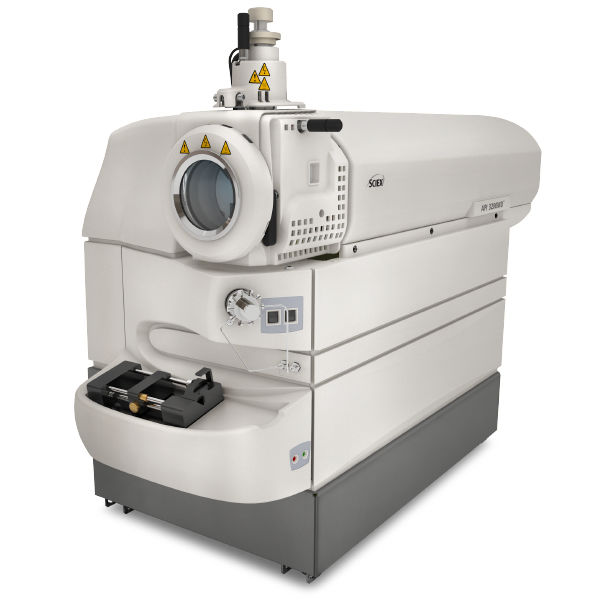Sciex QTRAP 4500 | LC-MS/MS Mass Spectrometer
In Stock
Product Code: SCX4500QTRAP
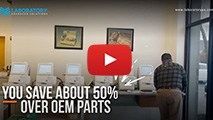
WHY CHOOSE MYCO INSTRUMENTATION?
See Why in 2 mins.
High sensitivity, high throughput mass spec system with advanced ion trap scanning ability from Ab Sciex. Remove interference and improved signal for analytical and clinical labs
Description
Ab SCIEX QTRAP LC-MS/MS System For Accurate Data
Accurate quantification with API 4500 for busy labs
Ever wondered if that peak truly signifies your analyte of interest?
Are matrix interferences affecting your detection and quantification?
Are you looking for ways to validate your data other than MRM, retention times, and ion ratios?
The SCIEX QTRAP® 4500 system gives you the gold standard in quantification and enables confirmatory experiments to reduce data error and increase productivity.
MRM & More with SCIEX QTRAP 4500
The Ab Sciex API 4500 does everything of a standard LC-MS/MS, and it also doubles as a Linear Ion Trap (LIT).
This proprietary technology lets you run additional workflows beyond basic multiple reaction monitoring (MRM) for better specificity and quantitative performance.
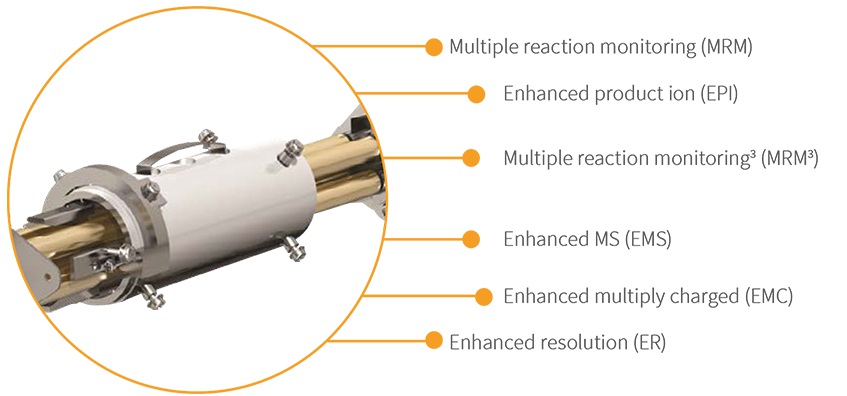
Linear Ion Trap (LIT) enables more workflows than standard MRM for more accurate data
Detect Unknown Analytes with Ab Sciex API QTRAP 4500
Zero ghost peak with Ab Sciex QTRAP Mass Spectrometer
The enhanced MS scan (EMS) transmits ions from the source into the Linear Ion Trap. In the Linear Ion Trap, the ions are scanned out axially to the detector.
This gives you a highly sensitive full scan for the detection of unknown analytes when your conventional MS/MS system struggles to see a response.
Better Signal/Noise ratio with Linear Ion Trap
Singly charged ions are removed in the Linear Ion Trap before the enhanced multiply charged scan (EMC) scans the multiply charged ions axially to the detector to improve signal and noise ratio.

Only see what you need to see, the EMC scan filters out all of the singly charged species so only the multiply charged ions remain.
Zoom into your target analytes
To capture an ion of interest, the enhanced resolution scan (ER) captures both the value of the charge state and the accurate mass-to-charge ratio (m/z) of an ion. This scan type is most useful when trying to determine structural information, perform database searches, or perform peptide sequencing, among many other applications.

Schematic of the path of the ions through the QTRAP system

Acquired data using various parameters for an ER scan at 50, 250 and 1000 Da/sec
Run ID Confirmatory Experiments with SCIEX QTRAP 4500
Obtain high-quality MS/MS spectrum on specific ions with the enhanced product ion scan (EPI).
The EPI trap scan delivers high levels of sensitivity, mass accuracy, and scanning speed that regular product ion scan doesn’t come close.
This is how it works:
Ion fragmentation occurs within the collision cell, a process that unlocks detailed MS/MS spectral data. The fragments produced are efficiently captured in the Linear Ion Trap, ensuring that every piece of data is collected before being scanned out.
Ab Sciex QTRAP for Modified Peptides Scans
High background and interferences making your standard MRM quantification difficult?
The Absciex QTRAP mass spectrometer uses the MS3 (MS/MS/MS) and MRM3 to remove the interference and enable a much lower detection of the particular analyte. This gives you additional structural information from your sample, especially important in the characterization of modified peptides such as glycopeptides.
Sciex QTRAP LC-MS/MS Workhorse for Analytical and Clinical Labs
The QTRAP 4500 System delivers 100X more full-scan MS/MS sensitivity than standard triple quads for unmatched simultaneous quantification and library searching.
Whether your research is focused on analytics or clinical diagnostics, the Ab Sciex API 4500 QTRAP deliver reliable and definitive results to improve your productivity.
API 4500 QTRAP Applications
Pharmaceutical Analysis and Drug Development
- Quantify drug compounds and their metabolites in biological matrices in pharmacokinetics (PK) and pharmacodynamics (PD) studies
- Support the development and validation of bioanalytical methods for drug and metabolite quantification in biological samples.
Environmental Testing
- Detect pollutants, pesticides, and industrial chemicals in water, soil, and air samples.
Food Safety and Agriculture
- Detect and quantify pesticide residues in fruits, vegetables, and grains.
- Analyzing animal products for residues of veterinary drugs to ensure they are within the regulatory limits.
Clinical Research and Diagnostics
- Measure drug concentrations in patient samples in Therapeutic Drug Monitoring (TDM).
- Identify and quantify biomarkers for disease diagnosis, prognosis, and therapeutic monitoring.
Proteomics and Metabolomics
- Perform targeted quantification of proteins and peptides in complex biological samples, useful in biomarker research and disease studies.
- Analyze metabolites in biological systems for metabolite profiling.
Forensic and Toxicology Testing
- Quantify drugs of abuse and their metabolites in biological samples.
- Identify and quantify toxic substances and poisons in forensic samples.
Sciex API 4500 Features
| Mass range | Triple quadrupole: 5 – 2,000 Da. linear ion trap: 50 - 2,000 Da |
| Flexible ionization options | Options include electrospray ionization (ESI) and heated nebulizer ionization probes. |
| Polarity switching | 50 msec in MRM and Scheduled MRM modes |
| Detector type | AcQuRate pulse counting CEM |
| Features | Turbo V ion source, pulse counting detector |
| Scan types | Q1 MS, Q3 MS, product ion, precursor ion, neutral loss or gain, MRM, EMS, EPI, ER, MS3, MRM3, TripleTrap scanning |
| Ionization sources | Turbo V ion source housing with TurboIonSpray probe or APCI probe (max temp: 750ºC) ESI flow rate range: 5 μL/min to 3 mL/min APCI flow rate range: 200 µL/min to 3 mL/min |
Please call us at 253-750-0818 for more information on the instrument
The 4500 series will deliver reliable, robust and definitive results with a new level of confidence. Combined with accelerated lab integration packages, which merge LC, application software and validation services into comprehensive workflows specific to your application, the SCIEX 4500 series more than carries its weight.
improves the signal/noise ratio on ions which are multiply charged.
As in the EMS, the Ions are transmitted from the source to the LIT. Once the ion trap has been filled, the singly charged ions are removed, leaving the multiply charged ions behind. The ions are then scanned out axially to the detector.
- Unmatched Accuracy: Achieve precise data you can trust, every time.
- Enhanced Workflow: With confirmatory experiments that go beyond the basics, make every result count.
- Global Reliance: Join the ranks of leading companies and institutions worldwide that depend on our system's power and reproducibility.
- Versatility: From pharmaceutical R&D to food safety, environmental analysis, and protein quantification, it's the tool that adapts to your needs.
Make the switch to SCIEX QTRAP® and experience the difference in data quality, reliability, and workflow efficiency. The choice of experts across diverse fields, it's your partner in pushing the boundaries of what's possible in your laboratory.
Have you ever had second thoughts on whether the data you acquired is true? Are you sure that your peak is truly your analyte of interest? Do you ever wish you could confirm your result apart from MRM, retention times and ion ratios? Are you experiencing matrix interferences that affect your ability to detect and quantify? Addressing the challenges The solution to these common challenges: SCIEX QTRAP® technology delivers the gold standard in quantification and offers confirmational experiments to enhance your workflows. Used in laboratories all over the world, the QTRAP system is the instrument of choice for many companies and institutions that rely on its power, accuracy, reproducibility and robustness to acquire the best possible data across key applications in pharmaceutical drug discovery and development, food testing, environmental monitoring, protein quantification and more
Powerful quantification and confirmation of low abundance analytes
SCIEX triple quadrupole linear ion traps, these QTRAP mass spectrometers are based on the proven, accurate quantitation capabilities of SCIEX Triple Quad systems, but with enhanced scan functions to enable simultaneous quantitation and confirmation.
Additional MS scans, only attainable using the SCIEX QTRAP system, can deliver new and exciting discoveries for identification, characterization and quantification of your samples. From high-throughput analysis to detailed analyte investigations, the QTRAP system gives you the ability to both quantify and find unknowns in your sample, without any sacrifice to sensitivity. SCIEX offers a wide portfolio of QTRAP systems to meet your specific lab requirements and budget, explore what QTRAP can do for you.
QTRAP 4500 system
The QTRAP 4500 System offers reliable quantitation and library searching - with 100X more full-scan sensitivity over basic triple quads in the same class.
The LC-MS/MS workhorse, intelligently re-engineered
Known as the LC-MS/MS workhorse, this is the intelligently re-engineered design of the 4000 QTRAP platform, and sets a new benchmark for robust quantitation and library searching.
The system is ideal for laboratories requiring ultimate robustness, ruggedness, and reliability for high-throughput screening of many compounds in many samples every day.
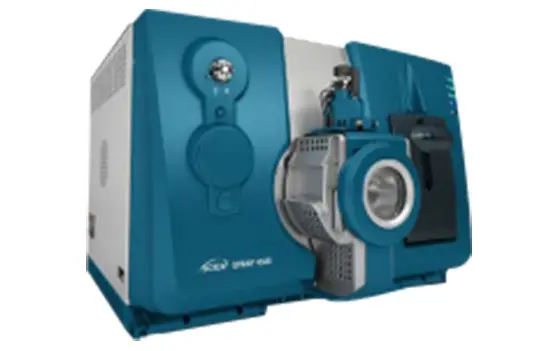
This system is a workhorse instrument for a wide range of analytical applications.
The AB Sciex 4500 Mass Spectrometer is incredibly robust and sure to boost productivity and efficiency within any lab.
It can handle difficult applications requiring round-the-clock quantitation, with the robustness to handle repeated injections of complex samples and reliability to minimize downtime.
What makes a QTRAP system so remarkable? While having the capability to function like a standard triple quad LC-MS/MS, it also doubles as a linear ion trap (LIT), proprietary technology that can perform a multitude of additional workflows beyond basic multiple reaction monitoring (MRM) for better specificity and quantitative performance.
The enhanced MS scan is the standard QTRAP® system MS scan where ions are transmitted from the source (Turbo V® Ion Source or IoDrive® System Technology) through the RF mode quadrupoles into the ion trap. The ion trap is filled, and the ions are scanned out axially to the detector. The scan type delivers a highly sensitive full scan for the detection of unknown analytes when your conventional MS/MS system struggles to see a response.
Q-TRAP Series
The AB Sciex 4500 Mass Spectrometer boosts productivity and lab efficiency. Sciex explains all the benefits and technology of this mass spectrometer.
AB Sciex API 5000 LC/MS/MS: High sensitivity for small molecule analysis, low detection limits, robust platform for pharmaceutical development, and precise quantitative analysis.
The AB Sciex API 5000 mass spectrometer plays a pivotal role in medical research, biotechnology, and clinical diagnostics, offering a multitude of applications thanks to its high sensitivity, accuracy, and versatility.
Here's how it's used across these fields:
1. Medical Research
- Drug Discovery and Development: The API 5000 is crucial in identifying and quantifying pharmacokinetics (PK), pharmacodynamics (PD), and metabolism of drug candidates. Its sensitivity allows for the detection of low-abundance metabolites and helps in understanding drug behavior within the body, which is vital for safety and efficacy assessments.
- Biomarker Discovery: Its capability to detect and quantify trace amounts of biological markers in complex biological samples aids in identifying potential biomarkers for diseases. This is critical for understanding disease mechanisms, developing diagnostic tests, and creating targeted therapies.


2. Biotechnology
- Proteomics and Metabolomics: In biotech research, understanding protein and metabolite profiles is essential. The API 5000, with its LC-MS/MS capabilities, can analyze these molecules in detail, providing insights into cellular processes, gene function, and the impact of biotechnological interventions.
- Quality Control of Biopharmaceuticals: The precision of the API 5000 ensures the purity and consistency of biopharmaceutical products, such as monoclonal antibodies or recombinant proteins, by detecting even the slightest impurities or variations in molecular composition.
3. Clinical Diagnostics
- Therapeutic Drug Monitoring (TDM): The instrument's sensitivity and accuracy are crucial for measuring drug levels in patients' blood to ensure they are within the therapeutic range. This is important for optimizing dosage, maximizing efficacy, and minimizing toxicity.
- Clinical Toxicology: It's used to detect and quantify drugs of abuse, pharmaceutical compounds, and toxins in bodily fluids, providing rapid and accurate results for emergency toxicology.
- Endocrinology: The API 5000 helps in the sensitive measurement of hormones and other biomolecules in clinical samples, aiding in the diagnosis and management of endocrine disorders.
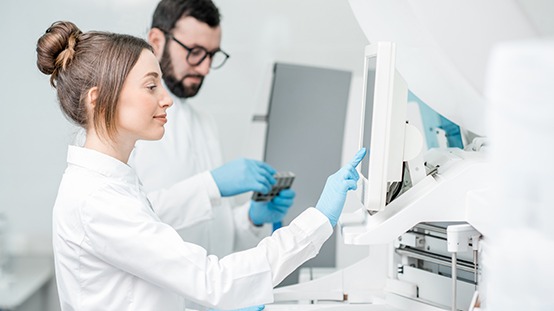
In marketing for laboratory equipment, emphasizing these applications can greatly appeal to your target audience. For instance, discussing how the API 5000 enhances drug development processes, supports the discovery of new biomarkers, or improves patient care through accurate diagnostics can showcase the value and impact of your products. Highlighting specific examples of how the instrument is used in cutting-edge research or clinical settings can illustrate its relevance and importance, encouraging potential customers to consider how such technology could advance their own work. Tailoring your marketing materials to address the specific challenges and goals of researchers and clinicians in these fields will resonate more deeply, driving interest and sales.




